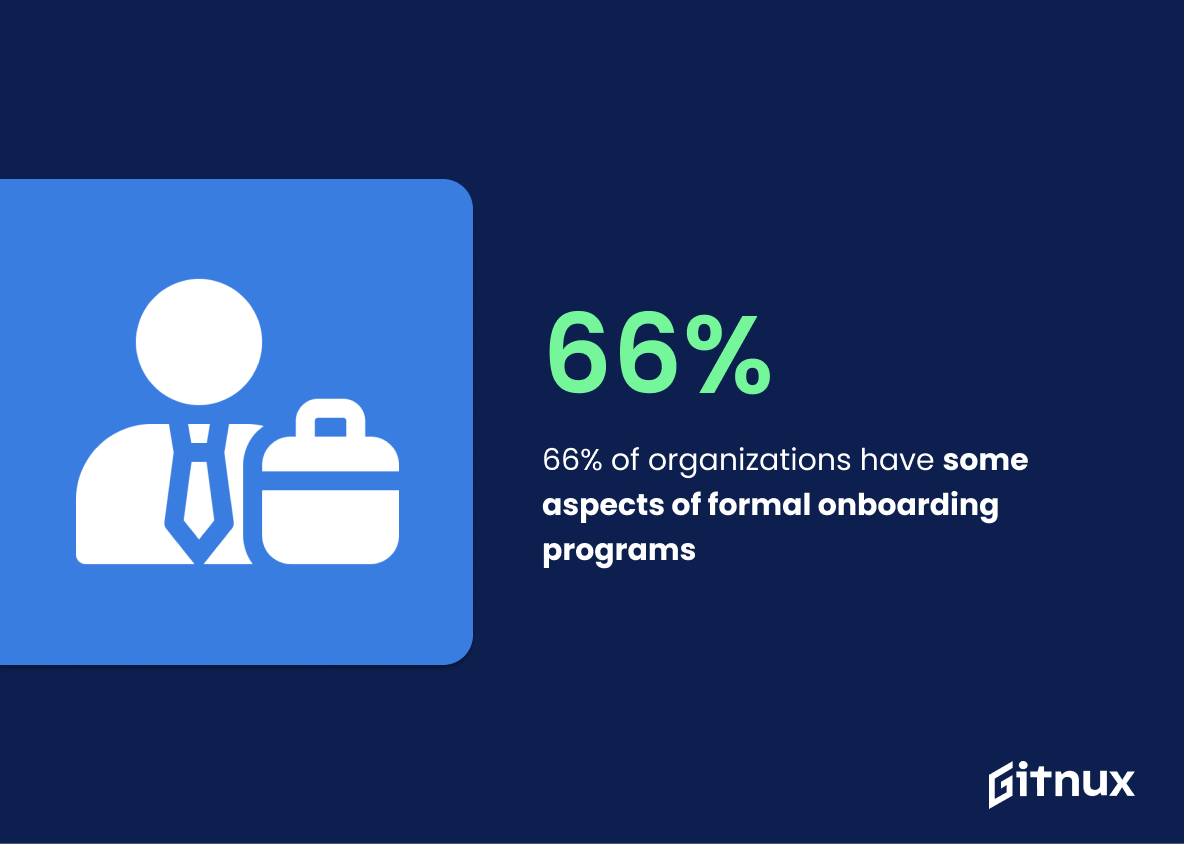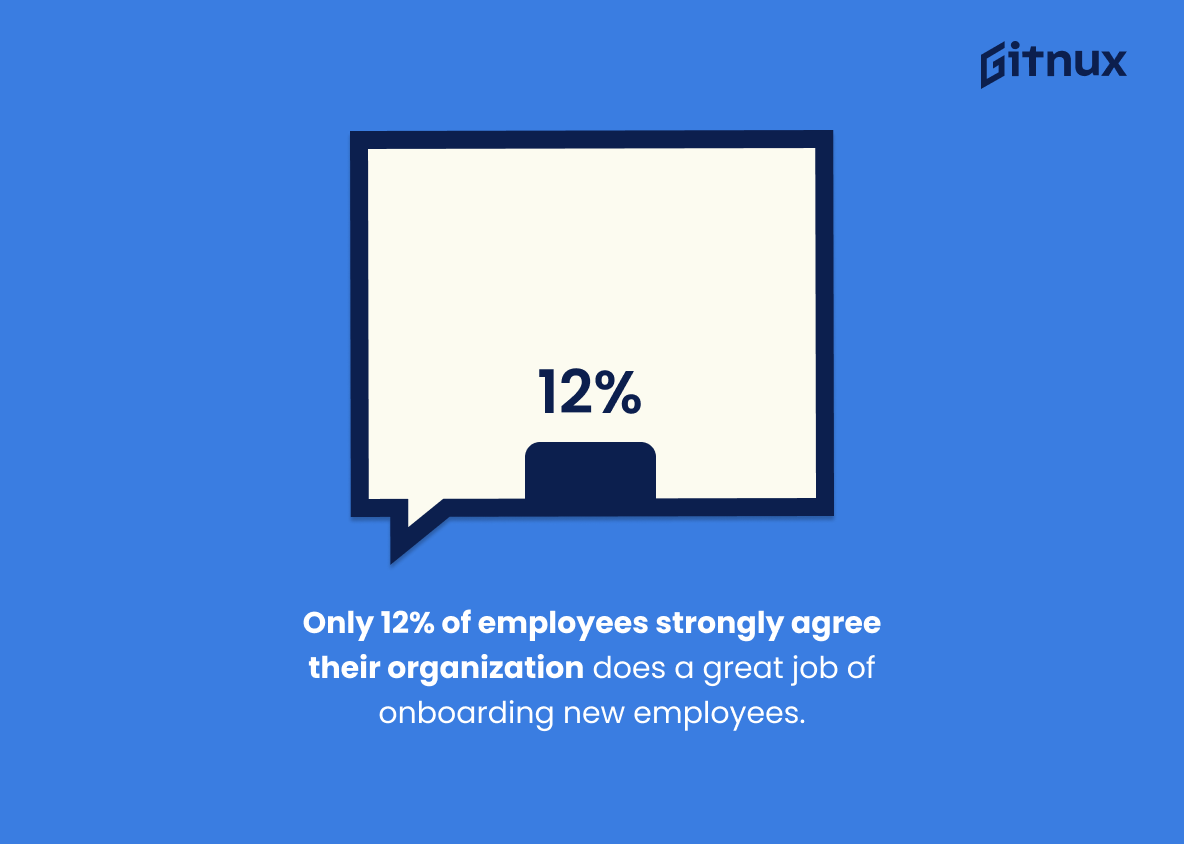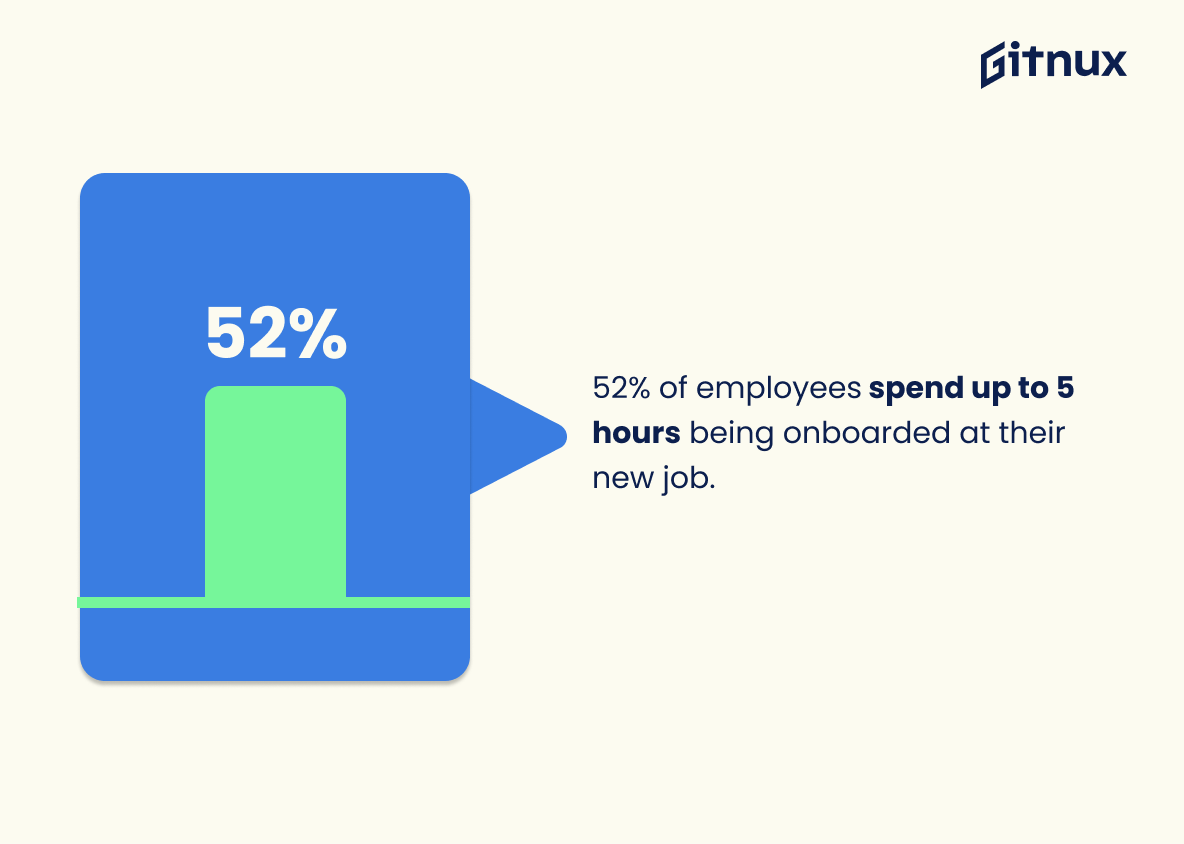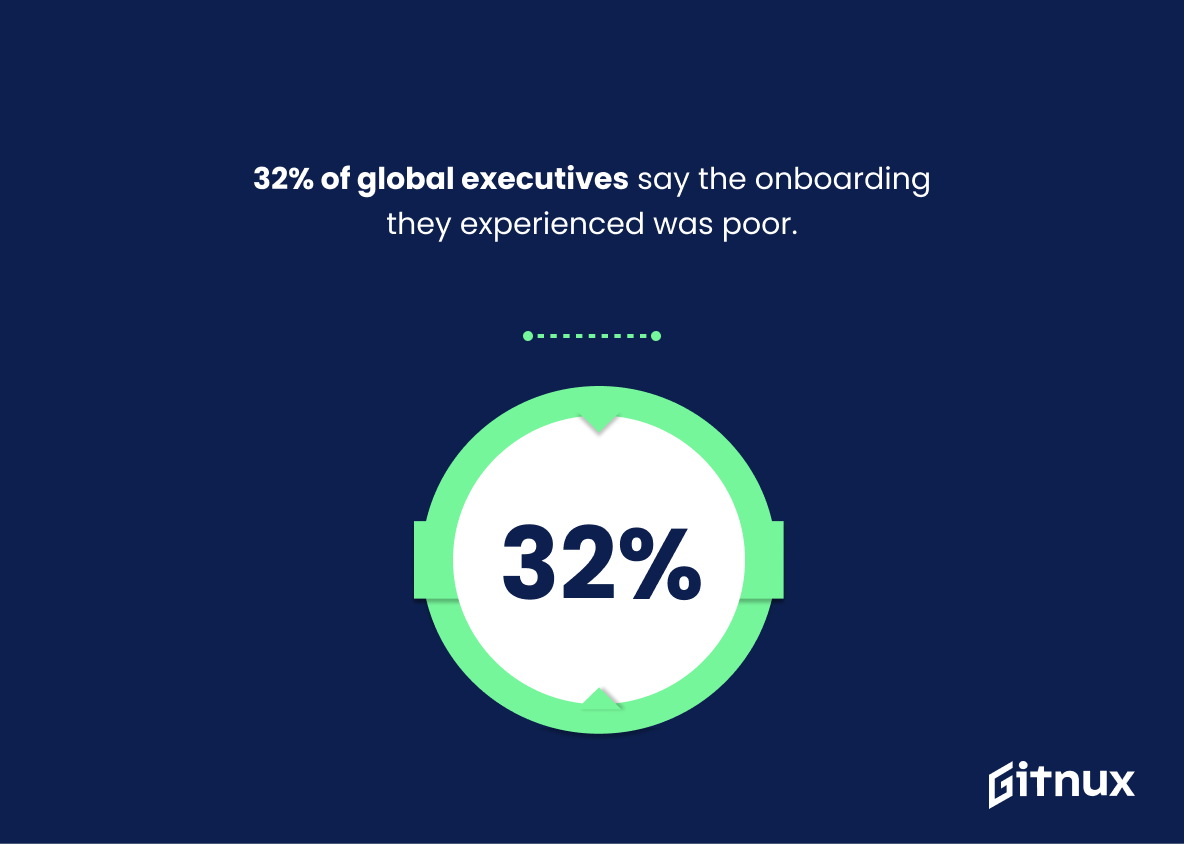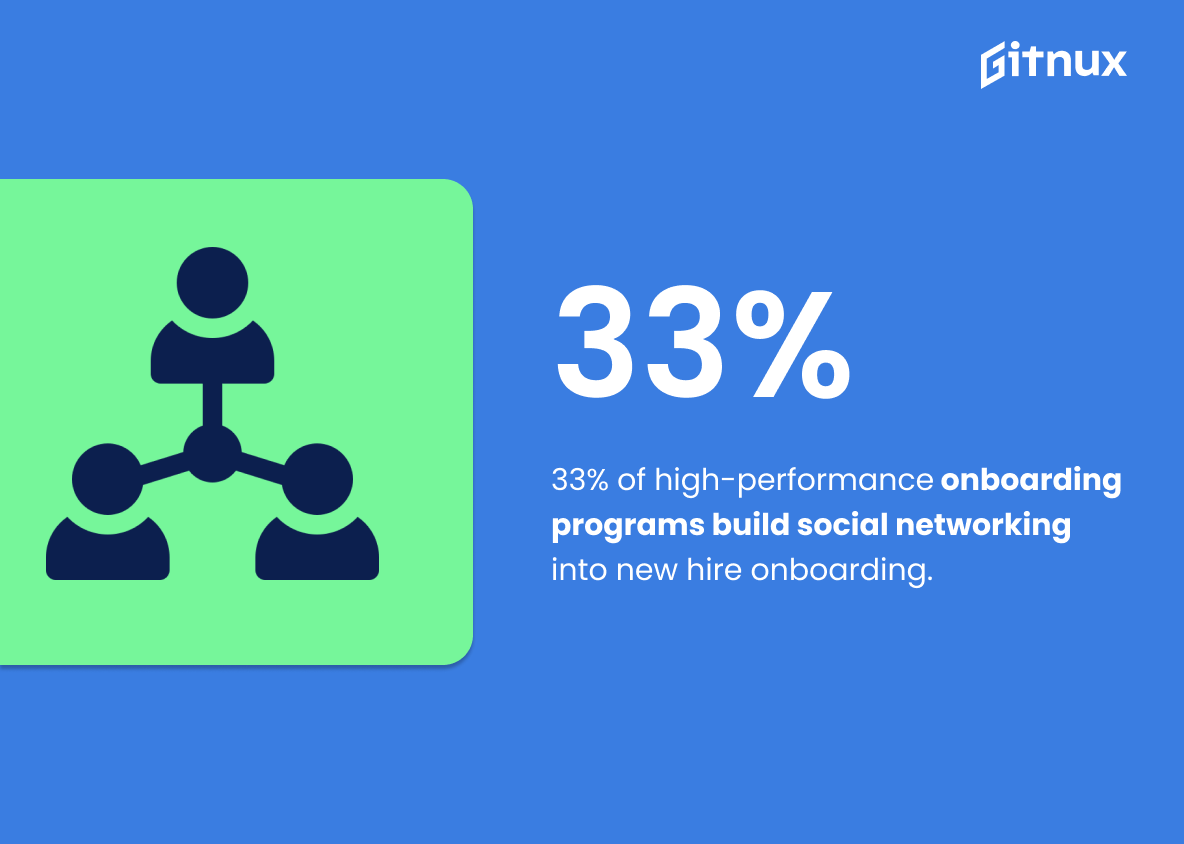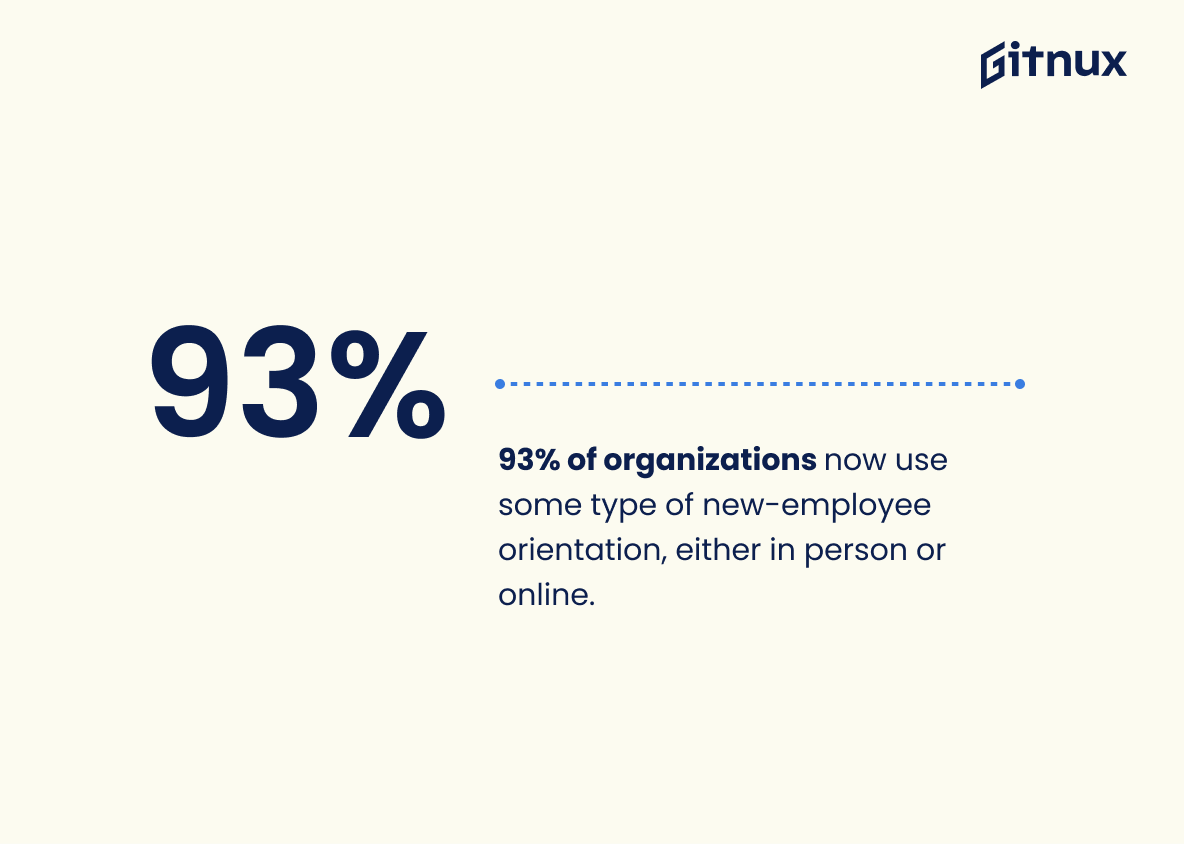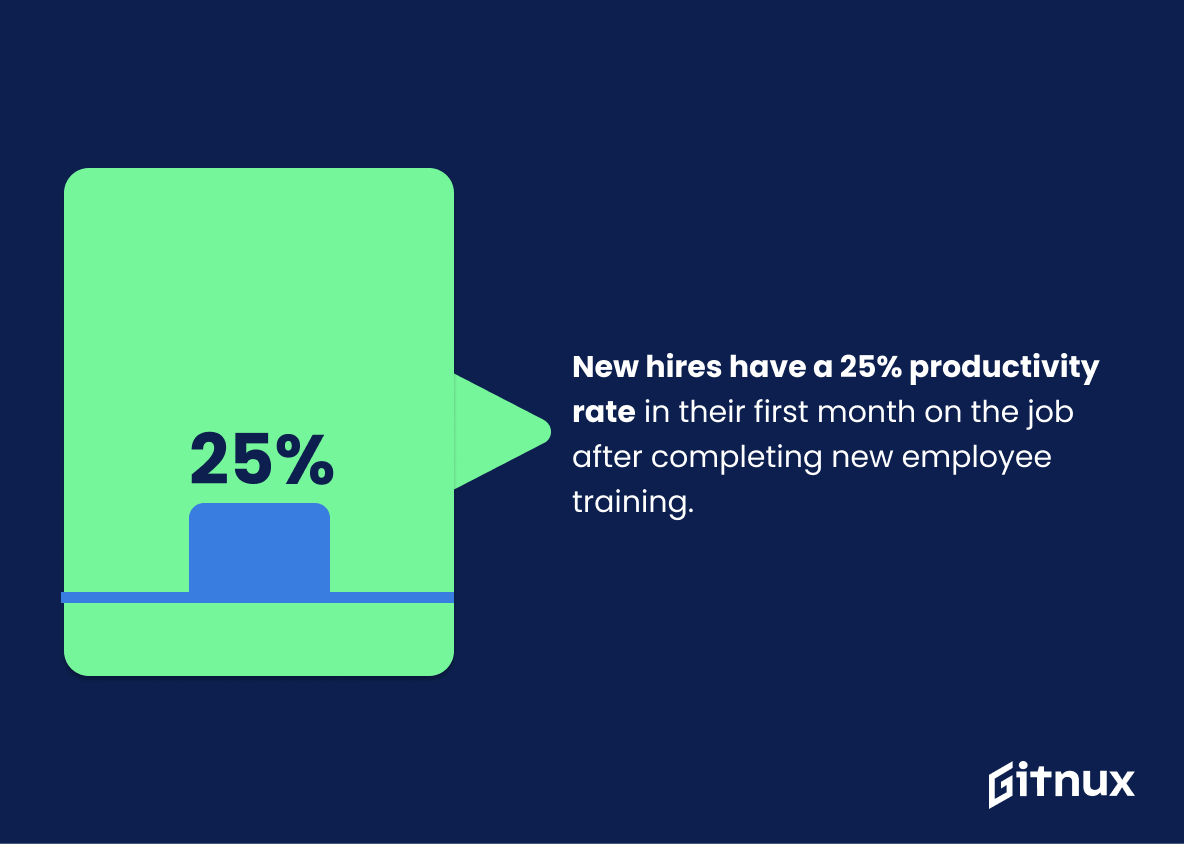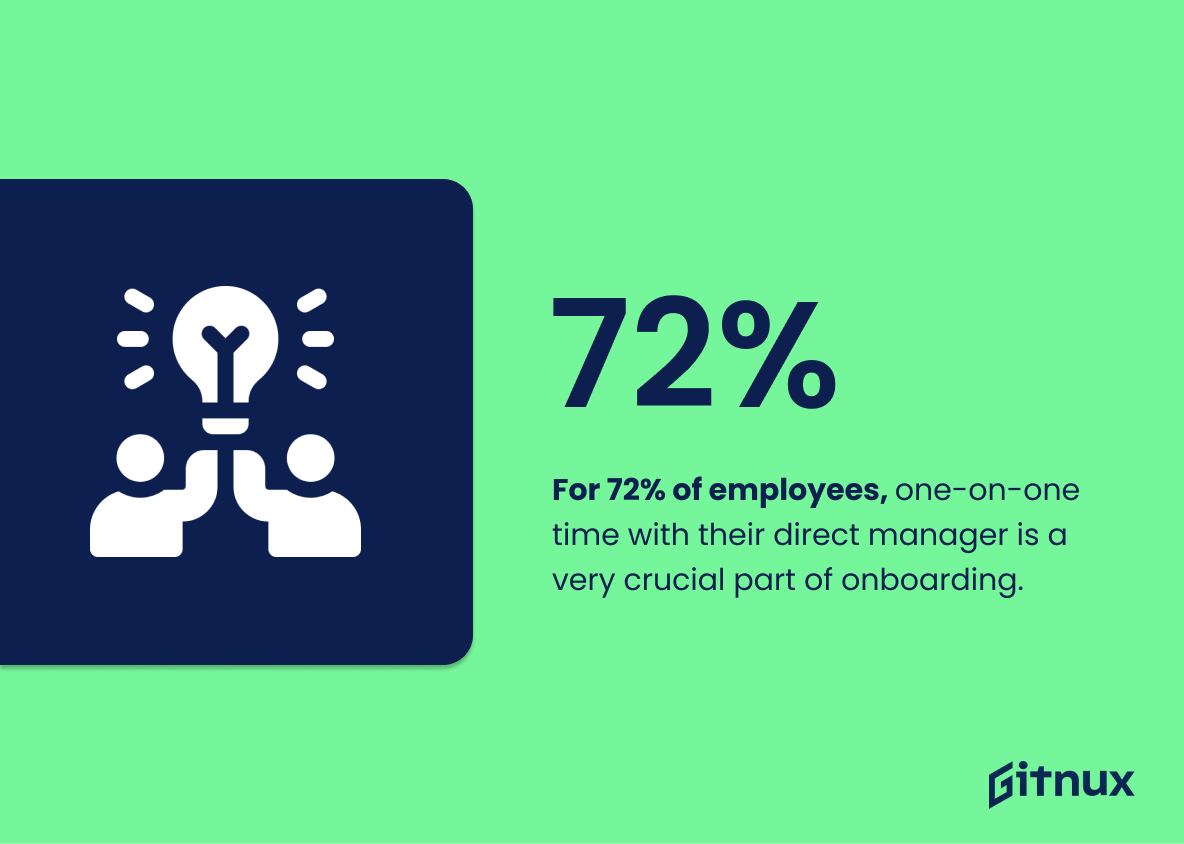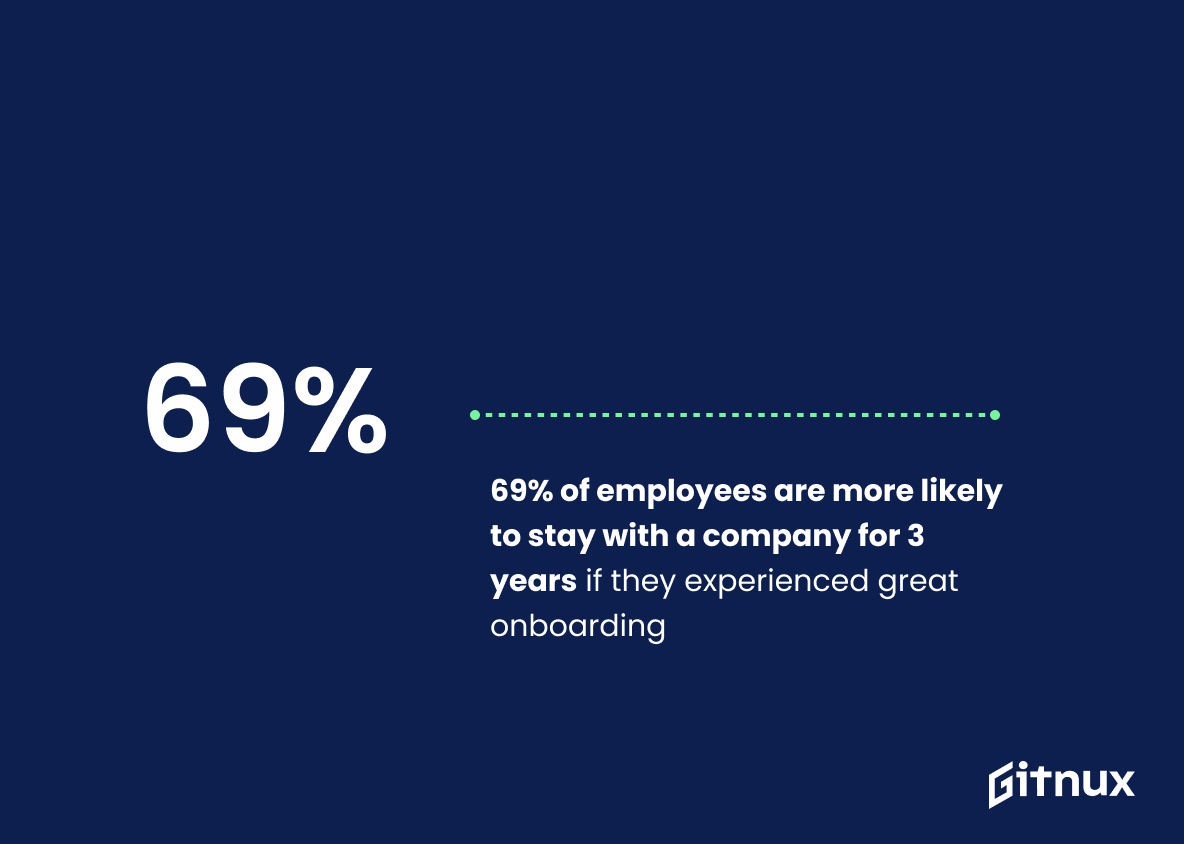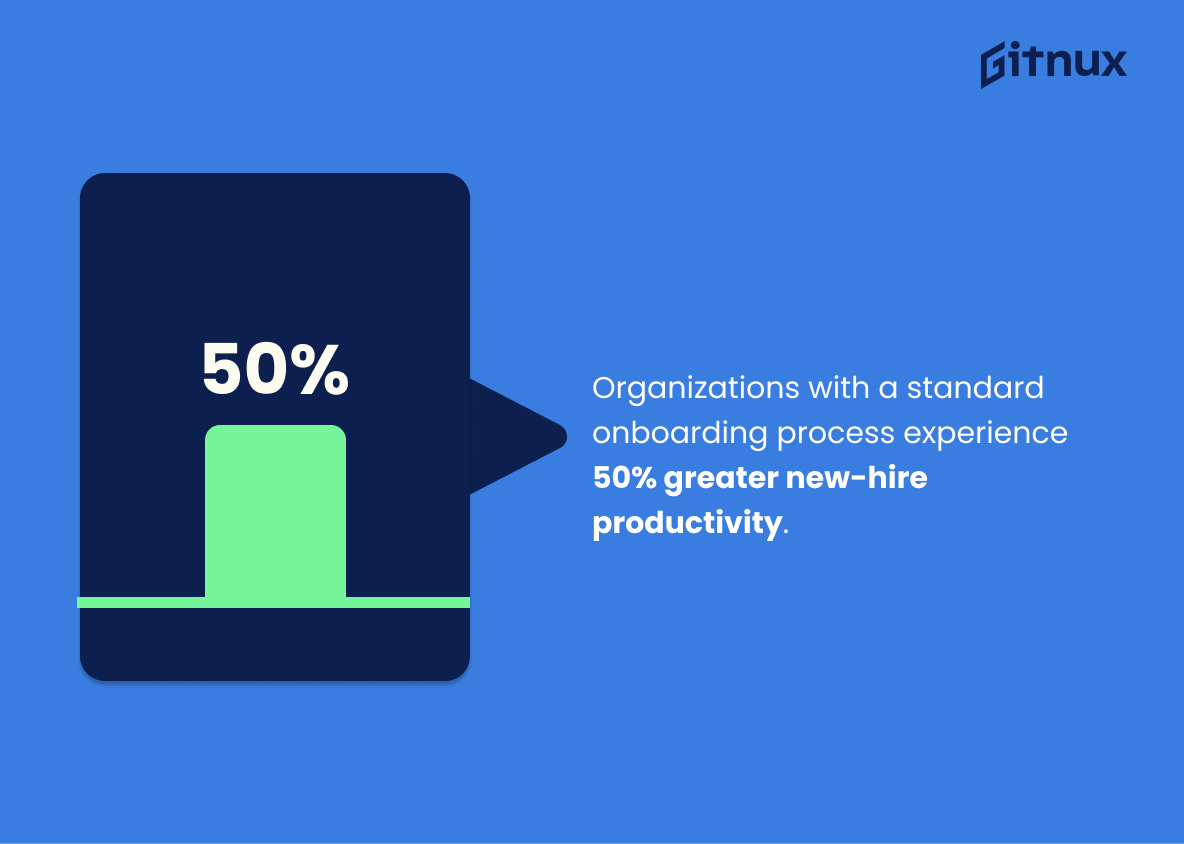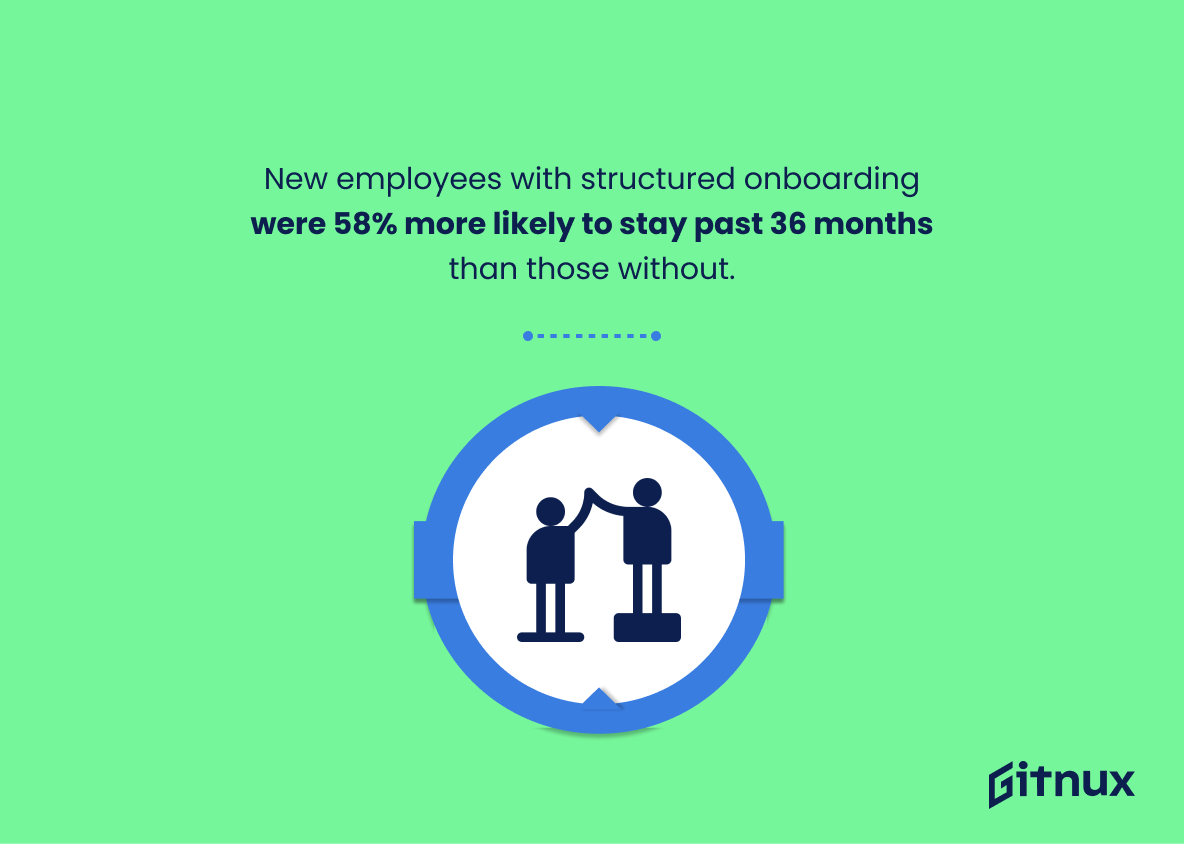Employee onboarding is essential for any business to ensure that new hires are set up for success. It can be a time-consuming and expensive process, but it is worth it to ensure that new employees are properly trained, engaged, and integrated into the company culture.
Statistics show that employee onboarding can have a significant impact on employee retention, job satisfaction, and productivity. In this article, we will explore the most important employee onboarding statistics and discuss how businesses can use them to improve their onboarding processes.
Employee Onboarding: The Most Important Statistics
Organizations with a standard onboarding process experience 50% greater new-hire productivity.
70% of team members who had exceptional onboarding experiences say they have “the best possible job”.
Employees with a good onboarding experience are 18x more committed to their organization than employees who felt their onboarding process was less effective.
General employee onboarding statistics
Nowadays, 66% of organizations have some aspects of formal onboarding programs and 53% invest in onboarding across a new employee’s first year. (ResearchGate)
Only 12% of employees strongly agree their organization does a great job of onboarding new employees. That means 88% don’t believe their organizations do a great job of onboarding.
58% of organizations say their onboarding program is focused on processes and paperwork.
52% of employees spend up to 5 hours being onboarded at their new job.
Onboarding is more developed for higher-level employees than for hourly workers. Unfortunately, 32% of global executives say the onboarding they experienced was poor.
The more effective onboarding programs understand the power of connections. 33% of high-performance onboarding programs build social networking into new hire onboarding.
New employees who attended a structured orientation program are 69% more likely to remain at the company for up to 3 years.
93% of organizations now use some type of new-employee orientation, either in person or online.
SHRM
New hires have a 25% productivity rate in their first month on the job after completing new employee training. That number then increases to 50% in their second month of work and 75% in their third month on the job. New team members typically take around 12 months to reach peak performance potential.
Employees who have a clear plan for their professional development are 3.5x more likely to strongly agree that their onboarding process was exceptional.
New employees tend to take around 8 months to 1 year before they can be as efficient as their regular co-workers.
For 72% of employees, one-on-one time with their direct manager is a very crucial part of onboarding.
Brandon Hall Group suggests, that onboarding should not be viewed as a one-week orientation, but rather a year-long program that helps new hires feel acclimated and motivated to perform.
The average employer spends around $4,000 and 24 days to hire a new employee.
Importance of employee onboarding
69% of employees are more likely to stay with a company for 3 years if they experienced great onboarding, and 58% more likely to be with the organization after 3 years.
Organizations with a standard onboarding process experience 50% greater new-hire productivity.
A recent Boston Consulting Group study found that onboarding was related to an organization’s ability to generate 2.5x more profit growth and 1.9x more profit margin than those organizations that continue to employ a haphazard “sink or swim” approach to recruiting and onboarding.
New employees who went through a structured onboarding experience were 58% more likely to remain with the organization after 36 months than those who did not. The cost of replacing a new employee can be 3x their salary.
The Aberdeen Group’s research showed that structured onboarding results in higher productivity faster (65%), higher employee engagement and inclusiveness amongst team members (69%), higher retention (50%), and better immersiveness of new hires in their teams (49%).
Organizations perceive effective onboarding as improving retention rates (52%), time to productivity (60%) and overall customer satisfaction (53%).
70% of team members who had exceptional onboarding experiences say they have “the best possible job”.
Companies that implement a formal onboarding program could see 50% greater employee retention and 62% greater productivity among new recruits. Employees who have a positive onboarding experience are almost 3x as likely to feel prepared and supported in their roles, boosting their confidence and improving their ability to perform their roles well.
29% of employees say that their company was able to properly onboard them, which they think is essential in helping them be better prepared to start their new jobs.
Manager satisfaction increases by 20% when their employees have formal onboarding training.
Onboarding programs can improve employee retention by 25%. In addition, well-designed onboarding plans can boost new hire performance by 11%.
54% of companies with onboarding programs report higher employee engagement.
Finances Online
A great onboarding experience ensures 69% of employees stick with a company for three years.
A standard onboarding process experience increases new hire retention by 50%.
Employee onboarding issues
95% of organizations of all sizes admit to making bad hires every year, according to Brandon Hall Group’s 2015 Talent Acquisition Study. These decisions can cost organizations hundreds of thousands of dollars.
Only 40% of employees say that their current job completely reflects how the position was described during the interview process.
More than 25% of employees say that they didn’t receive enough information about their job before accepting the offer.
A week-long onboarding program is a common practice at many organizations, but a week is hardly enough time for a new hire to become acclimated to their company, culture, and role. In fact, only 29%of new hires say they feel fully prepared and supported to excel in their role after their onboarding experience.
Poor onboarding has adverse effects on employees, and around 10% of employees resigned from a company because of their inadequate onboarding experience.
A poor onboarding program was reported by 32% of global executives.
Only 12% of employees think companies have done a great job with onboarding.
Only 37% of companies ensure their onboarding programs run for more than a month.
76% of HR professionals reported that their organizations underutilize employee onboarding practices. While 36% of HR executives said that the lack of technology prevents them from automating and organizing onboarding programs.
Onboarding best practices
Organizations considered in the top 20% in terms of onboarding had 91% first-year retention, and 62% of new employees reached their first-year goals. This compared to the bottom 30% of organizations, which reported only 30% retention and 17% goal completion for the same time frame.
Organizations that invest in a strong candidate experience improve their quality of hires by 70%.
Brandon Hall Group
Organizations with a strong onboarding process improve new hire retention by 82% and productivity by over 70%. Companies with weak onboarding programs lose the confidence of their candidates and are more likely to lose these individuals in the first year.
When asked what would make them feel most welcome at a new job, 38% of employees said they feel most welcome during onboarding when included in a group of other new hires. Additionally, new hires prefer intro meetings and interactive onboarding groups (31%) more than happy hours with colleagues.
BambooHR found that employees with good onboarding experience are 18x more committed to their organization than employees who felt their onboarding process was less effective.
New employees who went through a structured onboarding experience were 58% more likely to remain with the organization after 36 months than those who did not. The cost of replacing a new employee can be 3x their salary.
Conclusion
Onboarding new employees is a critical process for any organization. The statistics indicate that effective onboarding can have a positive impact on employee engagement and retention.
Companies that invest in onboarding programs that focus on creating a positive experience for new hires can expect to see a return on their investment in the form of increased employee productivity, job satisfaction, and employee retention. Companies that take the time to create an effective onboarding program will be rewarded with a more engaged and productive workforce.
References:
ResearchGate: “Onboarding: The power of connection”, cited January 2023 (Source)
Kallidus: “10 employee onboarding statistics you must know in 2022” , cited in January 2023 (Source)
HiBob: “The State of Employee Onboarding”, cited January 2023 (Source)
SHRM: “Onboarding New Employees: Maximizing Success”, cited January 2023 (Source)
Brandon Hall Group: “The True Cost of a Bad Hire”, cited January 2023 (Source)
Finances Online: “122 Vital Onboarding Statistics: 2023 Market Share Analysis & Data”, cited January 2023 (Source)
Harvard Business Review: “Onboarding Can Make or Break a New Hire’s Experience”, cited January 2023 (Source)
TechJury: “33 Startling Employee Onboarding Statistics to Know in 2023”, cited January 2023 (Source)
Zavvy: “65 Employee Onboarding Statistics HR Managers Need to Know in 2022”, cited January 2023 (Source)
BambooHR: “What is the Cost of Onboarding an Employee? [Calculator]”, cited January 2023 (Source)
ZipDo, cited June 2023: Employee Onboarding Statistics
